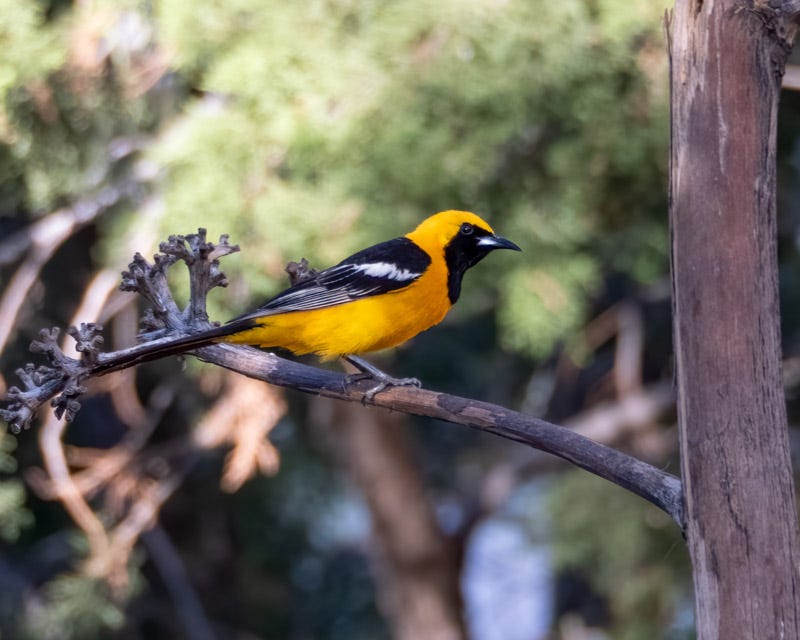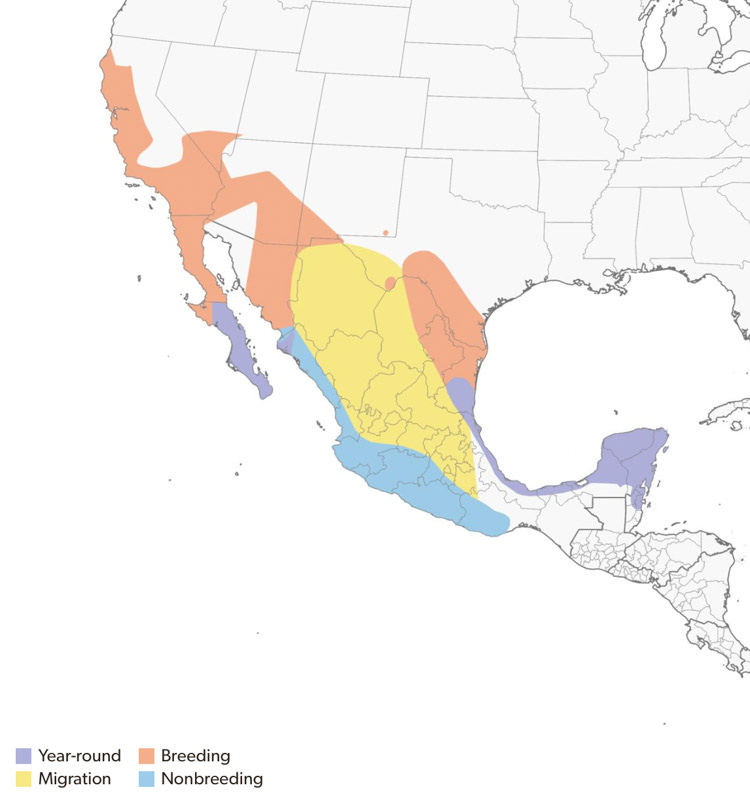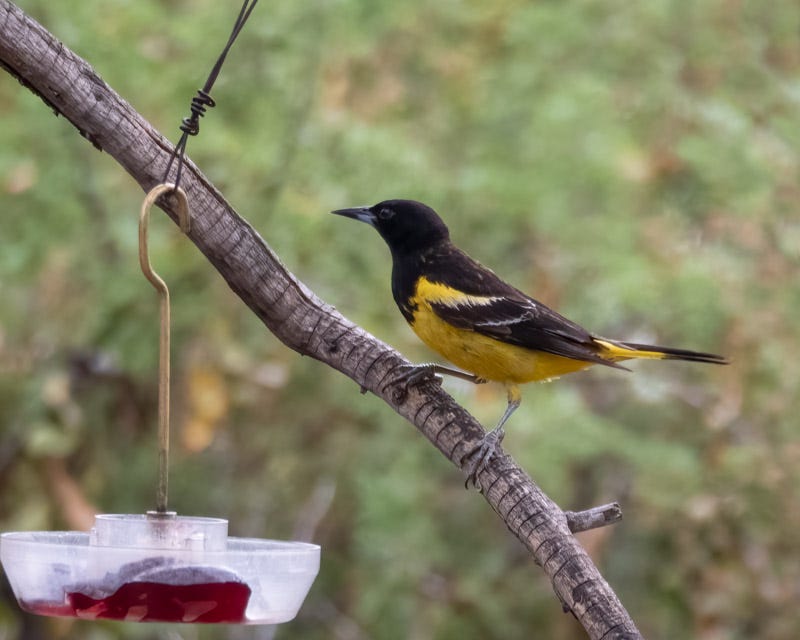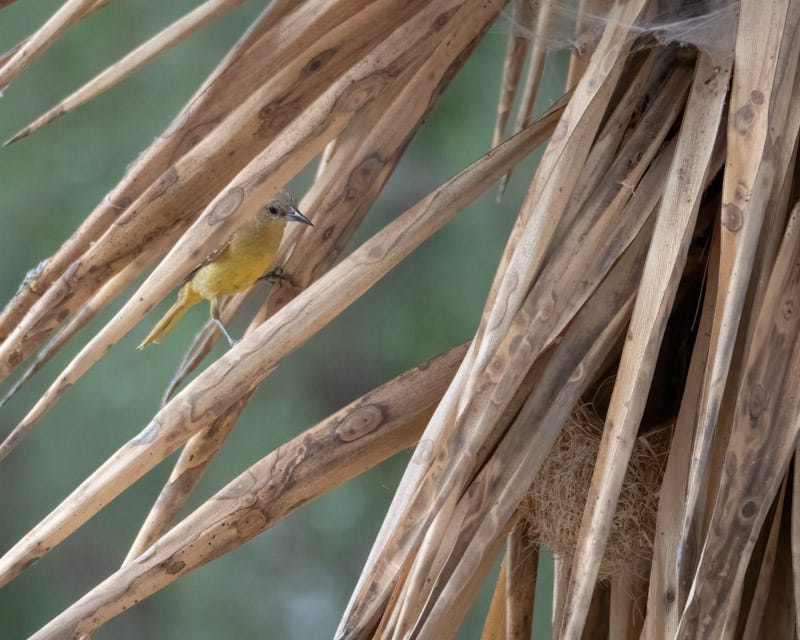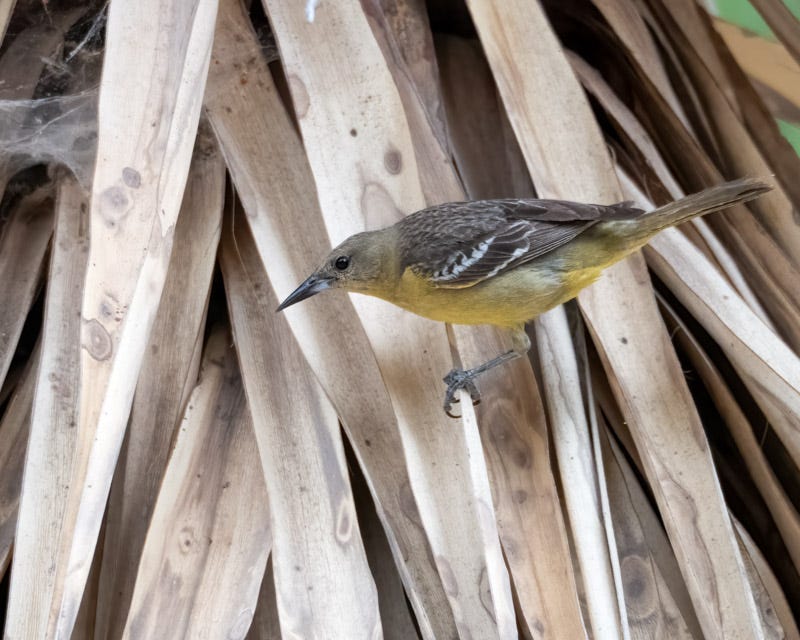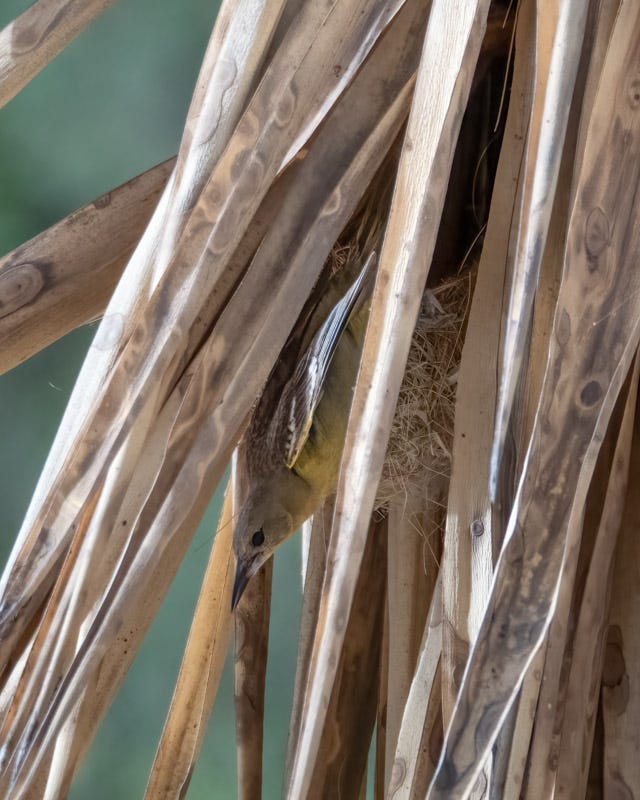Orioles, Orioles, Orioles
Three different species
In the Chiricahuas, I saw three different species of Orioles. A number were seen at two of the well known birding hotspots in Portal. Those two backyard feeding stations were developed by Dave Jasper and draw many birds as well as birders from around the world. The male Hooded Oriole below is a bird that can be seen frequently in the Tucson area during the summers. It has a yellow/orange hood, a black throat that extends to its eye creating a sort of "bib", and a white wingbar on its black wing.
A favorite breeding spot for Tucson's summering Hooded Orioles is in ornamental Palm trees. Outside of our urban area they use cottonwood, willow and sycamore trees typical of the desert southwest for their nest sites. There aren’t a lot of palm trees in the Chiricahuas!!
The range map below shows that the Hooded Orioles winter along the eastern and western coasts of Mexico as well as in Baja California. Tucson and southern Arizona, in orange, are parts of the unusually shaped breeding area for this species. I've taken this and other range maps from Cornell's "All About Birds" web page.
This immature male Hooded Oriole below does not have his adult male plumage yet. This is his second summer, having hatched last summer. By next year he will be indistinguishable from older males. In this current plumage, he has just the beginning of his black bib and the yellow is not as crisp as in a full adult. His looks do not make him a territorial threat to other male Hooded Orioles so they are more likely to leave him alone for this summer. Orioles are attracted to jelly feeders and the high energy they can obtain from the sugary treat.
LIke the Hooded Oriole above, the Scott's Oriole below is part of the blackbird family. Its black back, head and throat is set off by the yellow belly.
Scott's Orioles, like the Hooded, are common summer visitors to Southern Arizona. They are not as readily seen as the Hooded in the Tucson area but can be more easily found at slightly higher elevations in mountain slopes and high deserts.
An adult Scott's Oriole was waiting his turn at a jelly feeder.
Scott's Orioles are closely associated with yuccas. The birds will forage for insects and nectar, but they will also use the plant fibers, stripped from the edges of leaves, to build their nests. At the Southwest Research Station, one female Scott's Oriole was busy tending to her nest which was buried in a yucca. You can see the bowl nest in the bottom right hand corner in the photo below, hidden behind the leaves of the yucca. The female Scott's Oriole is looking straight towards her nest.
The female would return to her nest about every 15 minutes. She was always very wary before darting quickly into the hidden nest. The yucca was situated right by the porch of the gift shop and adjacent to the parking area, so humans were often around the nest. It took me quite a number of attempts to capture photos of this bird's rapid appearances at her nest.
Not only was the Oriole wary before darting into her nest, but she always left in a hurry. Her speedy disappearing act helps to prevent predators from figuring out where the nest is located. If you look between the leaves, you can see the dark circle of the opening to the nest.
On another morning, an adult male Bullock's Oriole approached the jelly feeder for his morning picker-upper.
At a different jelly feeder, a young male Bullock's came in to feed. This bird probably hatched this spring and it shows the beginning of the eyestripe of an adult male. It also has the faint beginning of the adult male's black throat patch. With this coloring, this young male will not be perceived as a territorial threat to any adult males.
Like its cousins, the Bullock's Oriole winters in southern Mexico but comes north during breeding season. It has a much wider presence in the US during the summers than the other two featured Orioles in this email.
Bullock's Orioles are not as common as Hooded Orioles in our urban Tucson environment. They are more commonly seen in desert oases and along foothills and lower mountain canyon groves of southern Arizona. The year-old male Bullock's, below, was a real treat to see.
The Chiricahua Mountains are known for their rich biodiversity. Seeing all three Oriole species was a great example of how special that Sky Island range is.



